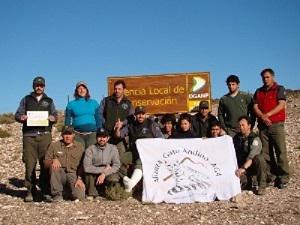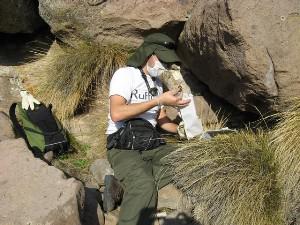Rocío Palacios
This project aims to increase knowledge of the Andean Cat distribution and status in the southernmost portion of its range while training protected area personnel in carnivore ecology, monitoring and conservation planning for initiating a monitor’s network in the southern Andean steppe.

The presence of the Andean cat (Oreailurus jacobita) in San Guillermo National Park, San Juan, Argentina, was confirmed in 2003, 400km further south than the previous southernmost recent record. In 2005, park rangers from Mendoza province took a photo of a female Andean cat and kitten, expanding the species’ distribution further south by more than 900kms. The western portions of San Juan and Mendoza provinces are in the Southern Andean Steppe, have very low human populations, and contain large protected areas. Thus, they may be good prospects for long term conservation of the species and its habitat.

Capacity building of park service personnel in all protected areas that are in the southern Andean steppe is important because they are on the front line of conservation strategies. This will be done in 17 different areas and, in addition to resident rangers; we will train some technical personnel and students. We expect to be able to identify enthusiastic persons (rangers, students, local stakeholders) that want to involve themselves in long term conservation efforts, therefore initializing a self-sufficient monitoring network in the Southern Andean Steppe. We expect to create links between them, and also with other teams that are working elsewhere for felids and wild lands conservation. We will arrange a Carnivore Monitoring Workshop with the most enthusiastic rangers. We will also make an elementary school workshop using an innovative approach. With this we expect to create a fluid interaction between park rangers, the local Natural Resources Office and local people.
To complement this approach, the field training activities will be used to assess the presence of Andean cats and other carnivores in protected areas. This specie has never been studied for the Southern Andean Steppe eco-region where prey communities are expected to be different than those from northern areas, so we expect to obtain the much needed first information about the status and basic biological aspects.
This project will provide much needed information on the distribution of the Andean cat in the Southern Andean Steppe, while leaving a legacy of trained rangers and technicians to carry out monitoring and conservation planning for the Andean cat for years to come.